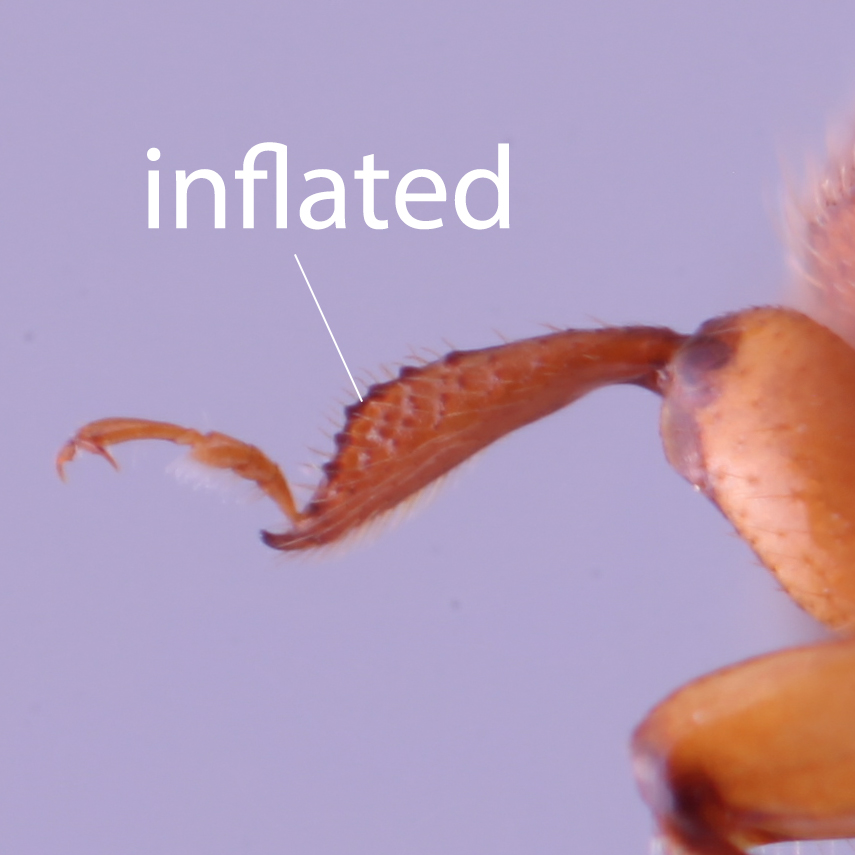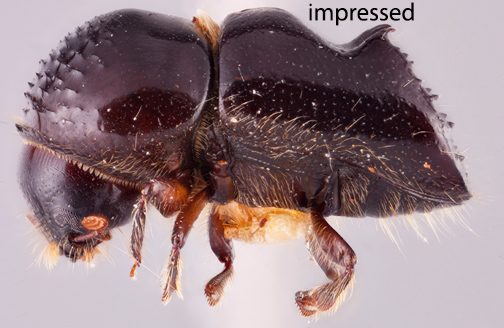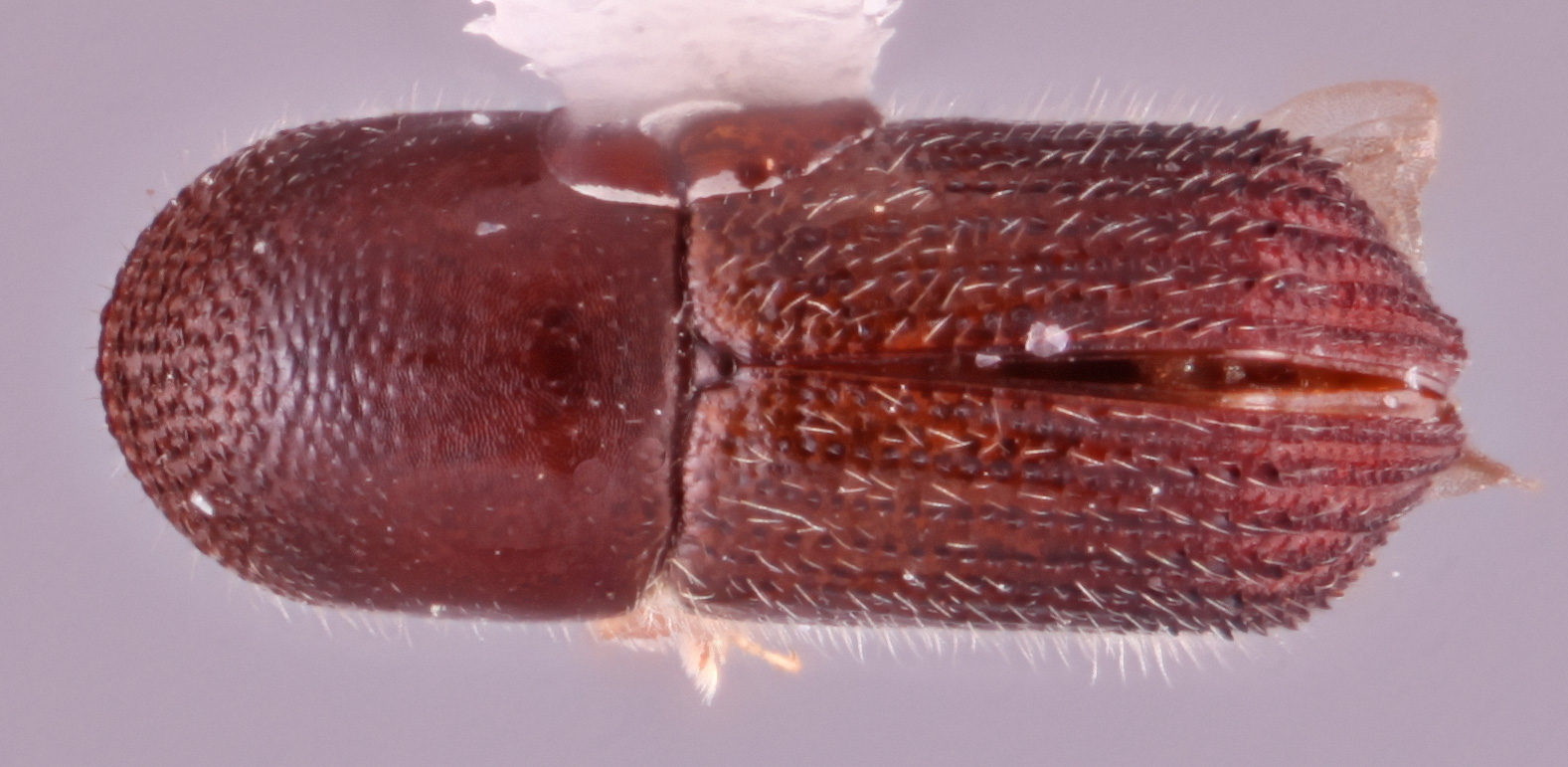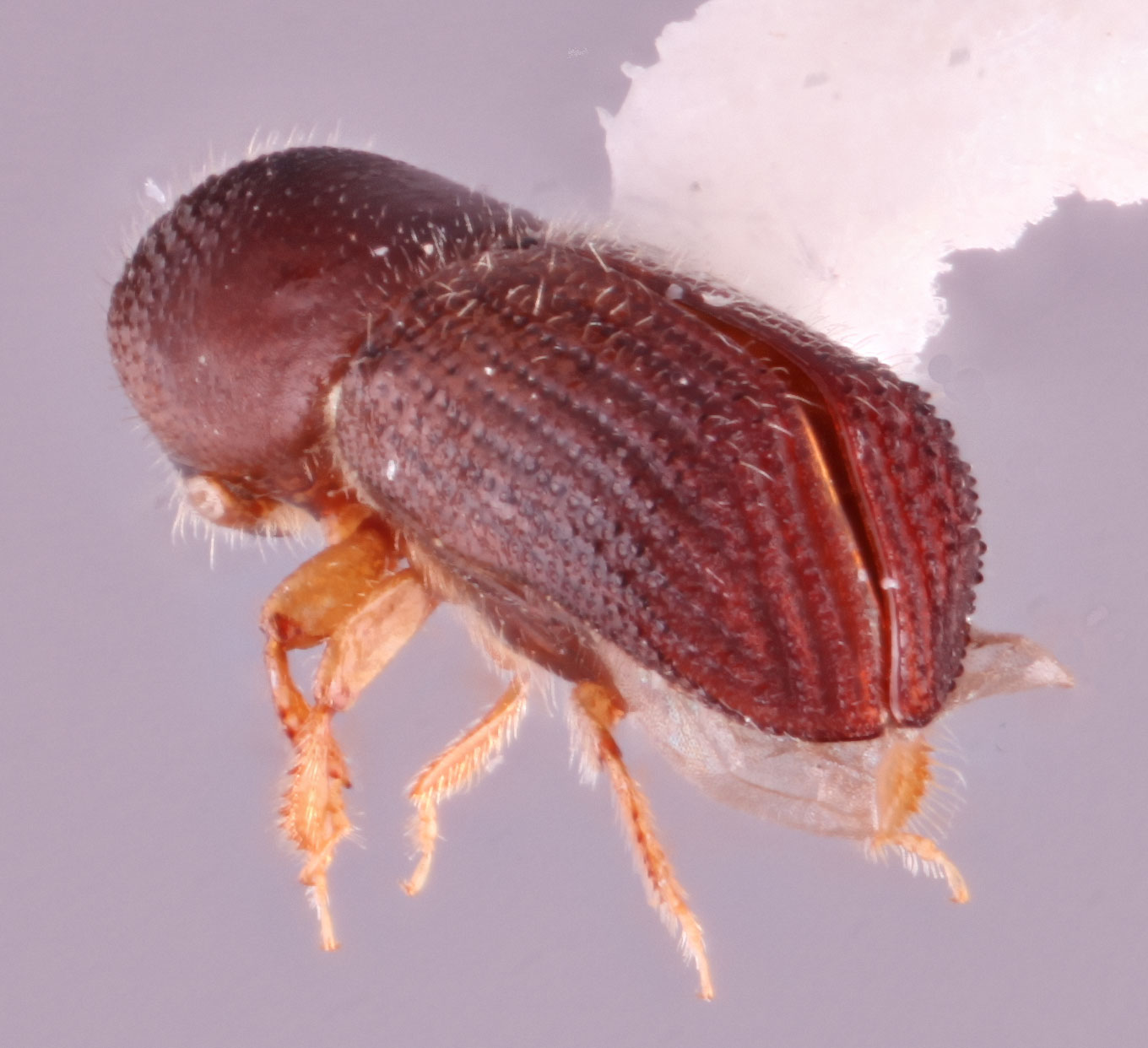Arixyleborus silvanus
|
Arixyleborus silvanus holotype lateral; S.M. Smith |
|
Arixyleborus silvanus holotype dorsal; S.M. Smith |
|
Arixyleborus silvanus holotype declivity; S.M. Smith |
|
Arixyleborus silvanus holotype frontal; S.M. Smith |
Taxonomic history
Arixyleborus silvanus Smith, Beaver & Cognato 2020 (in Smith et al. 2020bSmith et al. 2020b:
Smith SM, Beaver RA, and Cognato AI. 2020b. A monograph of the Xyleborini (Coleoptera, Curculionidae, Scolytinae) of the Indochinese Peninsula (except Malaysia) and China. ZooKeys 983: 1-442. https://doi.org/10.3897/zookeys.983.52630): 132.
Diagnosis
1.65–1.8 mm long (mean = 1.72, n = 5); 2.6–2.7 times as long as wide. Distinguished by the protibiaprotibia:
tibia of the first pair of legs
posteriorposterior:
toward the rear end; opposite of anterior
 face inflatedinflated:
face inflatedinflated:
blown up; distended
 and granulate; elongate body form and steeply sloping elytralelytral:
and granulate; elongate body form and steeply sloping elytralelytral:
pertaining to the elytra
declivitydeclivity:
downward slope of either the pronotum or elytra
 , the posterolateralposterolateral:
, the posterolateralposterolateral:
relating to end of the side part/portion
 margin with a series of granules; pronotalpronotal:
margin with a series of granules; pronotalpronotal:
pertaining to the pronotum
summit distinctly anterioranterior:
the front or forward; opposite of posterior to middle; elytralelytral:
to middle; elytralelytral:
pertaining to the elytra
discdisc:
the flat central upper surface of any body part (e.g. pronotum and elytra) with striaestria:
with striaestria:
punctures in rows, which may or may not be impressed to make grooves impressedimpressed:
impressedimpressed:
a depression in a surface
 on posteriorposterior:
on posteriorposterior:
toward the rear end; opposite of anterior
 part; and interstriaeinterstria:
part; and interstriaeinterstria:
longitudinal spaces along the elytra between the striae, which is not as<br />
impressed and bear smaller punctures.
 1-3 extending to apexapex:
1-3 extending to apexapex:
point or edge furthest from the body; opposite of base
 of declivitydeclivity:
of declivitydeclivity:
downward slope of either the pronotum or elytra
 and armed with uniseriate granulesgranule:
and armed with uniseriate granulesgranule:
a small rounded protuberance, like grains of sand
 .
.
Arixyleborus silvanus is distinguished from A. mediosectus by its less elongate form (2.9–3.3 times as long as wide in mediosectus), and less elongate pronotumpronotum:
the dorsal surface of the thorax
(1.1–1.2 times longer than wide vs 1.3 times in mediosectus), the more coarsely granulategranulate:
pertaining to a coarse, grainy surface texture
 interstriae, and more deeply impressedimpressed:
interstriae, and more deeply impressedimpressed:
a depression in a surface
 striae at the apexapex:
striae at the apexapex:
point or edge furthest from the body; opposite of base
 of the elytralelytral:
of the elytralelytral:
pertaining to the elytra
discdisc:
the flat central upper surface of any body part (e.g. pronotum and elytra) , and the presence of fine hair-like setaeseta:
, and the presence of fine hair-like setaeseta:
small hair-like or scale-like structure
on the declivitydeclivity:
downward slope of either the pronotum or elytra
 rather than coarse setaeseta:
rather than coarse setaeseta:
small hair-like or scale-like structure
. It can be further distinguished from the closely related A. crassior by the more elongate form (2.5 times as long as wide in A. crassior), more stout pronotumpronotum:
the dorsal surface of the thorax
(1.1–1.2 ×longer than wide vs 1.3 times in A. crassior), the more coarsely granulategranulate:
pertaining to a coarse, grainy surface texture
 interstriae, and weakly impressedimpressed:
interstriae, and weakly impressedimpressed:
a depression in a surface
 striae at the apexapex:
striae at the apexapex:
point or edge furthest from the body; opposite of base
 of the elytralelytral:
of the elytralelytral:
pertaining to the elytra
discdisc:
the flat central upper surface of any body part (e.g. pronotum and elytra) , and the presence of fine hair-like setaeseta:
, and the presence of fine hair-like setaeseta:
small hair-like or scale-like structure
on the declivitydeclivity:
downward slope of either the pronotum or elytra
 rather than coarse setaeseta:
rather than coarse setaeseta:
small hair-like or scale-like structure
.
May be confused with
Arixyleborus crassior, A. mediosectus, and A. phiaoacensis
Distribution
China (Fujian, Guangxi, Hainan), Thailand, Vietnam
Host plants
Liquidambar formosana (Altingiacae) (Smith et al. 2020bSmith et al. 2020b:
Smith SM, Beaver RA, and Cognato AI. 2020b. A monograph of the Xyleborini (Coleoptera, Curculionidae, Scolytinae) of the Indochinese Peninsula (except Malaysia) and China. ZooKeys 983: 1-442. https://doi.org/10.3897/zookeys.983.52630) and Castanopsis chinensis (Fagaceae) (Smith et al. in review)
DNA data
Sequences available for COI and CAD.





